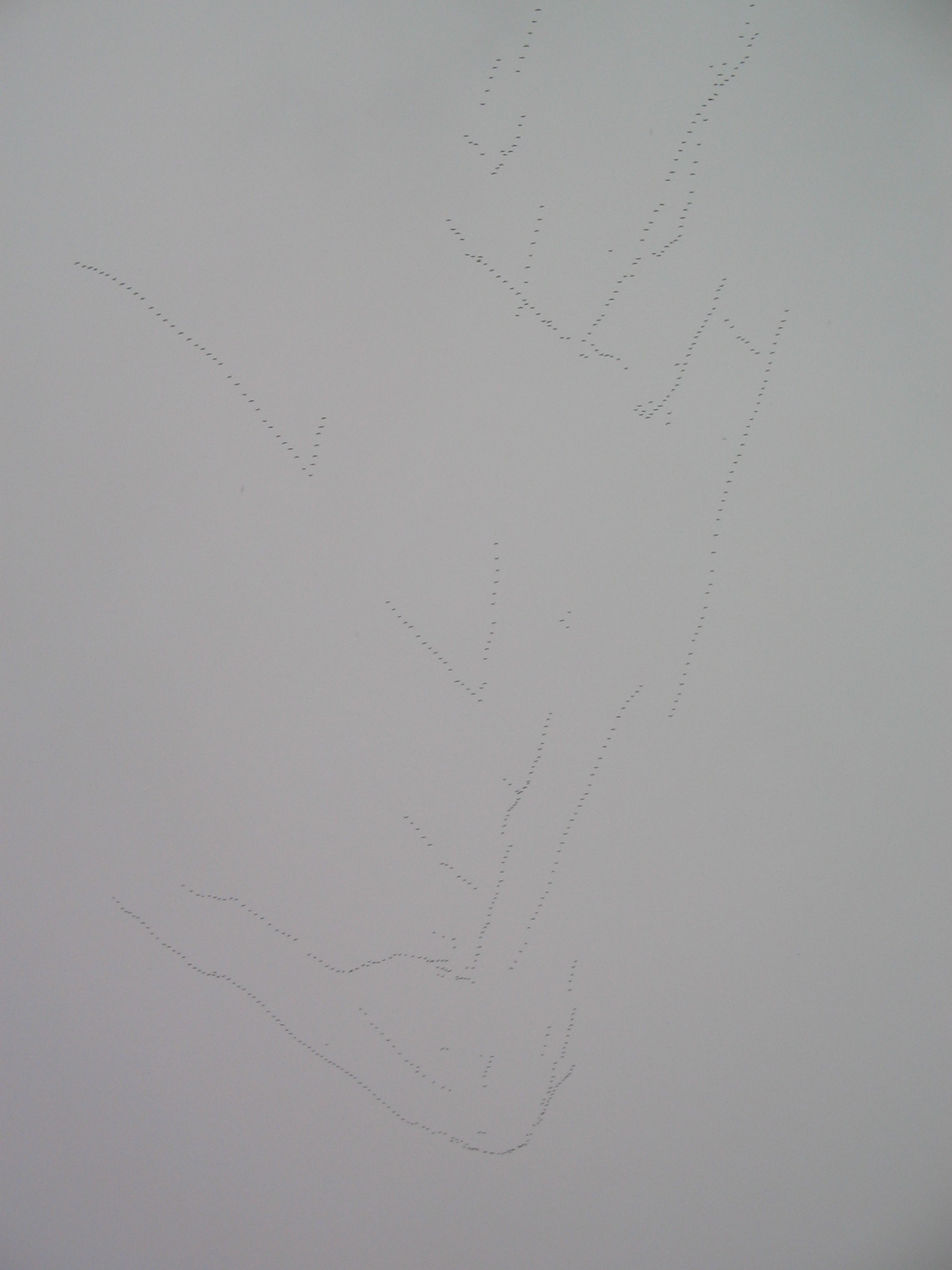![]() Observation: The First Step in the Scientific Method
Observation: The First Step in the Scientific Method
To observe means to look at something. Good observers carefully note the details. When scientists observe things they ask questions. Scientists then seek to answer their questions. These observations are the initial step in the scientific method.
Observations are also called data. There are two kinds of data.
- Qualitative data are descriptions that do not have numbers.
Example: The large, light brown rock has many smaller rocks in it. They were scattered over the surface like sprinkles on a cupcake. The small rocks glistened when the sun's rays touched them.
- Quantitative data are obtained by measuring and have numbers. Scientists use instruments (tools) to obtain numbers based data.
At 1200 hours GMT observed: Location: Latitude 38.89°N and Longitude 77.02°W. The 1360 kilogram pegmatitic specimen has 5 flakes of mica per square centimeter. The mica is 2.5 on Mohs scale. The pegmatite is 7 on the Mohs scale. The flakes demonstrate iridescent properties. This is quantitative data.
Practice making observations:
While filling bird feeders in late February, I heard this sound.
I looked up into the snowy sky and observed this.
Click on the photo for a closer view. Use the Back Button of your browser to return to this web page.
1. Write your observations.
Imagine - If you were standing there, looking at the sky:
What tools (instruments) would help you to be a better observer?
What tools (instruments) would you use to make measurements?
2. Fire up your imagination or curiosity.
Write at least two hypothesis about what is shown in the photograph. What is a hypothesis?
3. TAI (Think About It) Which fields of science would be interested in studying this phenomena?
Resources:
About Units of Measurement - IB Biology | Observing Biology how to's
Counting Techniques USGS | Observation - Science Skills Builders index
Steps of the Scientific Method - Science Buddies | Learn about the Scientific Method Activity
"I still get wildly enthusiastic about little things... I play with leaves.
I skip down the street and run against the wind." Leo Buscaglia
Water Study Unit | Bluebirds Project | Wetland EcoStudy Unit | Fields, Meadows and Fencerows Ecostudy Unit | Moving Out - Migration Internet Hunt
![]()
All trademarks, copyright and logos belong to their respective owners.
Internet Hunts / Nature / Plants & People / Computers / Famous Pennsylvanians / Civics & History / Puzzles & Projects / Site map / Home
Posted
by Cynthia J. O'Hora 2/2009, released for noncommercial use by nonprofit organizations
Aligned
with Pennsylvania Academic Standards | Assessment and Rubrics
![]() Save a tree use a digital answer format - Highlight the text. Copy it. Paste it in a word processing document. Save the document in your folder. Answer on the wp document in an easily read, contrasting color or font. (Not yellow ) Avoid fancy fonts like: Symbols, Techno,
Save a tree use a digital answer format - Highlight the text. Copy it. Paste it in a word processing document. Save the document in your folder. Answer on the wp document in an easily read, contrasting color or font. (Not yellow ) Avoid fancy fonts like: Symbols, Techno, ![]() ,
, ![]() ) Save frequently as you work. I have never liked losing my work. You will not like it either. Be sure to enter your name & the date at the top of the document. Submit via email attachment or class dropbox. Bad things happen: Save a copy of the response document for your records.
) Save frequently as you work. I have never liked losing my work. You will not like it either. Be sure to enter your name & the date at the top of the document. Submit via email attachment or class dropbox. Bad things happen: Save a copy of the response document for your records.
Proof read your responses. It is funny how speling errors and typeos sneek in to the betsworck. ![]() Make your own printer paper answer sheet
Make your own printer paper answer sheet
Pennsylvania Academic Standards - The Nature of Science
Processes, Procedures and Tools of Scientific Investigations
• Apply knowledge of scientific investigation or technological design in different contexts to make inferences to solve problems.
• Use evidence, observations, or a variety of scales (e.g., time, mass, distance, volume, temperature) to describe relationships.
National Science Education Standards:
CONTENT STANDARD G: As a result of activities in grades 9-12, all students should develop understanding of:
NATURE OF SCIENTIFIC KNOWLEDGE
Scientific explanations must meet certain criteria. First and foremost, they must be consistent with experimental and observational evidence about nature, and must make accurate predictions, when appropriate, about systems being studied. They should also be logical, respect the rules of evidence, be open to criticism, report methods and procedures, and make knowledge public. Explanations on how the natural world changes based on myths, personal beliefs, religious values, mystical inspiration, superstition, or authority may be personally useful and socially relevant, but they are not scientific.
Because all scientific ideas depend on experimental and observational confirmation, all scientific knowledge is, in principle, subject to change as new evidence becomes available. The core ideas of science such as the conservation of energy or the laws of motion have been subjected to a wide variety of confirmations and are therefore unlikely to change in the areas in which they have been tested. In areas where data or understanding are incomplete, such as the details of human evolution or questions surrounding global warming, new data may well lead to changes in current ideas or resolve current conflicts. In situations where information is still fragmentary, it is normal for scientific ideas to be incomplete, but this is also where the opportunity for making advances may be greatest.
